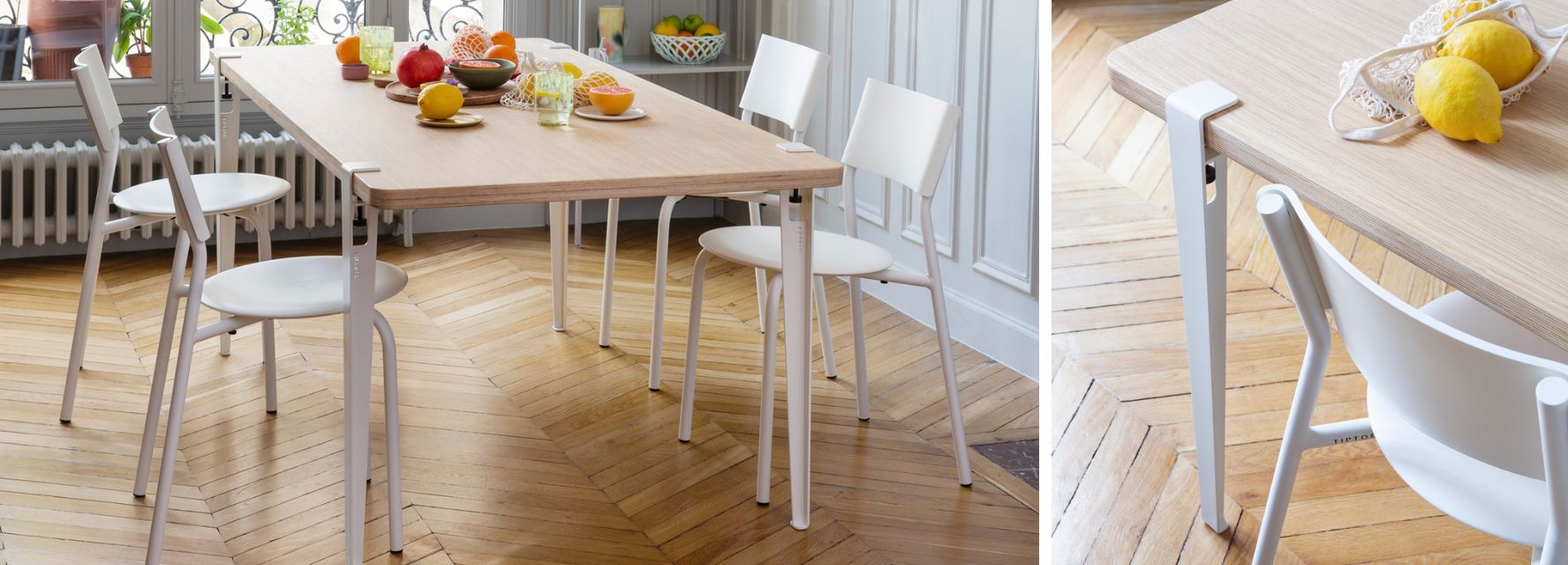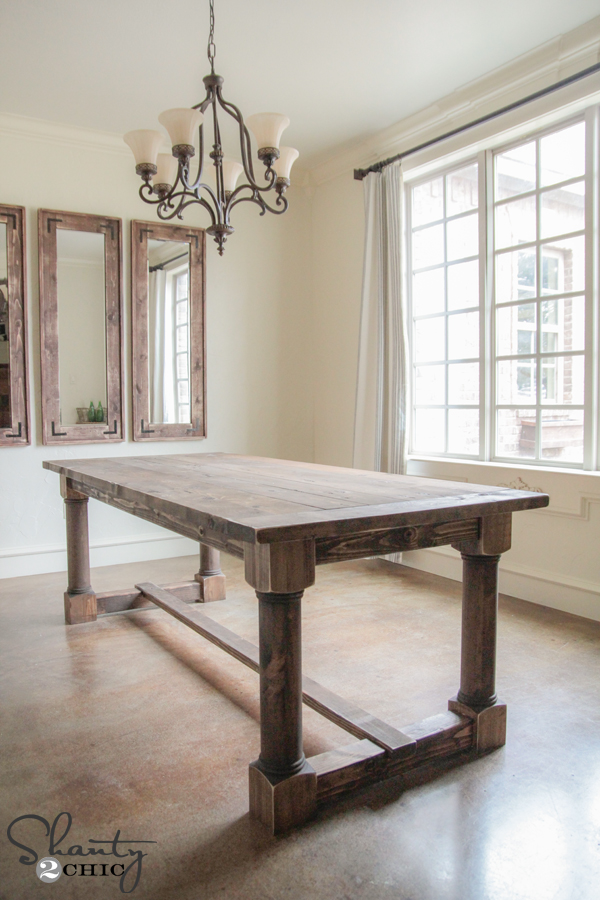Tips for Installing Dining Room Table Legs for a Modern Look
Tips for Installing Dining Room Table Legs for a Modern Look
Blog Article
From Conventional to Modern: Locate the Ideal Dining Space Table Legs for Your Style
The option of eating space table legs plays a pivotal function in specifying the general character of your space, connecting the gap in between traditional craftsmanship and modern-day aesthetic appeals. While timeless layouts such as cabriole and transformed legs evoke a feeling of timeless class, contemporary styles like hairpin and geometric choices present an opportunity for striking aesthetic rate of interest. Examining the appropriate balance in between these styles needs a nuanced understanding of your existing décor and individual preference. As you take into consideration these components, the question continues to be: how can you seamlessly incorporate these diverse leg styles to produce a harmonious eating experience?
Understanding Table Leg Styles
The range of eating space table leg designs can considerably affect both the aesthetic appeals and performance of the room. Each leg style adds unique useful functions and aesthetic components, providing to diverse layout preferences and use needs. Comprehending these styles is vital for selecting the best table that aligns with your general indoor design vision.
For example, conical legs offer a clean, timeless appearance that can improve a room's elegance, while stand bases provide stability and make the most of legroom, making them optimal for smaller sized rooms. Barrette legs, a characteristic of mid-century contemporary style, introduce a commercial style, permitting a ventilated, open feel. Trestle legs evoke rustic appeal, supplying durable assistance and a sense of eternity.
Wood legs can bring heat and texture, whereas steel choices frequently share a streamlined, contemporary vibe. Inevitably, recognizing table leg designs is essential for developing a cohesive dining area that reflects individual style while making sure functionality and comfort.
Conventional Table Leg Options
When selecting eating room table legs, conventional choices typically personify timeless style and craftsmanship. These designs mirror an abundant heritage and a dedication to high quality, making them perfect for those who appreciate timeless looks.
One of one of the most legendary conventional leg designs is the cabriole leg, identified by its elegant curved form. This design typically includes decorative carvings and is most commonly found in Queen Anne and Chippendale furniture. Another prominent option is the turned leg, which flaunts a collection of smooth, rounded shapes that provide a traditional appearance while preserving security.
In addition, the straight leg, while simple, offers a durable and basic framework that can mix effortlessly with a range of tabletop styles. For those drawn to ornate describing, claw-and-ball feet legs evoke a sense of majesty and can act as a sensational centerpiece in any type of dining room.
Last but not least, pedestal bases, although not strictly legs, supply an alternative typical alternative that enables sufficient legroom and can be magnificently sculpted. Each of these typical leg designs adds to the overall atmosphere of a dining-room, marrying feature with aesthetic allure.

Modern Table Leg Layouts
Modern table leg layouts supply a diverse array of designs that highlight clean lines and ingenious materials. These styles typically prioritize capability while acting as striking focal points within an eating area. Minimal aesthetic appeals are prevalent, with legs crafted from products such as steel, glass, and crafted timber, which contribute to a contemporary and airy feel.
One preferred style is the barrette leg, identified by its slender, conical framework that gives stability without overwhelming the table top (dining room table legs). This design is commonly discovered in mid-century modern-day furniture and can easily match different table forms. One more pattern is the usage of read here geometric forms, where legs might handle angular or unbalanced forms, including aesthetic interest and a touch of creativity

Mixing Styles for Unique Spaces
Commonly, homeowners look for to produce unique eating areas that show their individual style by mixing various design elements. This method enables the incorporation of diverse looks, resulting in a harmonious yet distinct environment. Coupling a rustic wood table with sleek, modern steel legs can create an appealing comparison that boosts the space's general charm.
Additionally, integrating vintage table legs with modern tabletops can stimulate a feeling of background while preserving a modern perceptiveness. Such combinations not just showcase private preference but also motivate creative thinking, permitting homeowners to curate a space that really feels both personal and inviting.
Shade plays a critical function in this mixing process; picking table legs that complement or comparison with the existing color pattern can boost aesthetic interest. Whitewashed legs can soften the boldness of a dark table surface, creating a balanced aesthetic.
Tips for Picking the Right Legs
Choosing the right table legs is vital for achieving both capability and aesthetic appeal in your dining area. Begin by thinking about the general design of your area. Conventional settings gain from legs that feature complex makings or turned layouts, while contemporary areas may require smooth, minimalist designs.
Next, analyze the elevation and security of the legs. dining room table legs. Basic dining tables range between 28 to 30 inches in height, so make sure the legs match this measurement for comfort. Additionally, robust products, such as wood or metal, can enhance stability and longevity
Examine the leg shape as well-- alternatives consist of directly, tapered, or stand styles. Straight legs offer a classic appearance, while tapered legs can include a touch of style. Pedestal bases give enough legroom and are click to investigate optimal for smaller sized areas.
Conclusion
In summary, picking the excellent eating room table legs requires cautious consideration of both contemporary and typical styles. Typical alternatives such as cabriole and turned legs offer ageless beauty, while modern-day designs like barrette and geometric shapes offer a contemporary touch. By balancing leg design, elevation, and product with the find out this here overall design, a natural and inviting environment can be achieved. Inevitably, the picked table legs should reflect the preferred aesthetic, improving the dining experience within the area.
The selection of dining room table leg styles can considerably influence both the looks and capability of the room. Eventually, recognizing table leg styles is essential for developing a cohesive dining area that shows personal design while making certain practicality and comfort.One of the most famous traditional leg designs is the cabriole leg, defined by its stylish bent form. Straight legs offer a traditional look, while conical legs can add a touch of beauty.In summary, picking the ideal dining space table legs requires cautious consideration of both traditional and modern styles.
Report this page